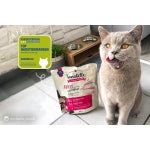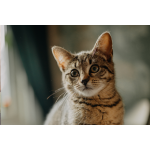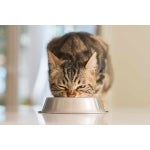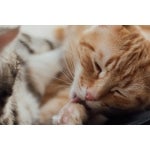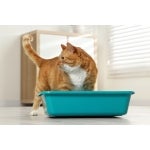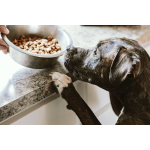
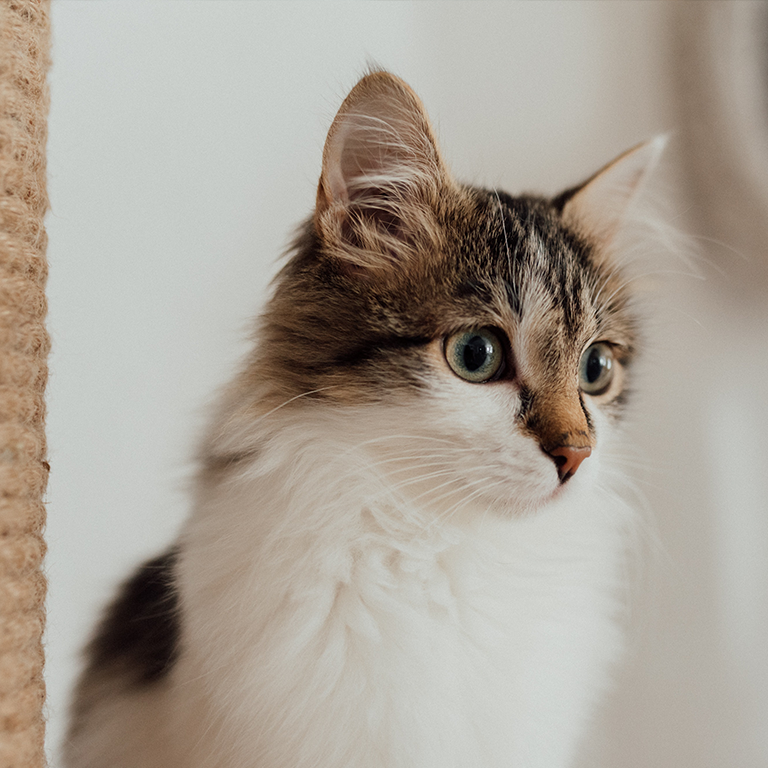
What happens to my cat's body after neutering?
Neutering your cat changes its hormonal balance, which affects its appetite and energy requirements. Appetite increases significantly, while the entire metabolism slows down and energy consumption drops by around 30 %. The combination of these two factors means that neutered cats tend to be overweight.
When feeding neutered or sterilized cats, it is therefore particularly advisable to choose an energy-reduced food with a lower fat content. As commercially available cat food is adapted to the energy and mineral requirements of unneutered cats, it is not ideal to simply put the cat on a diet with a smaller amount of food. This means that the body receives fewer vitamins and minerals, which can lead to an undersupply.
Which food is suitable for neutered cats?
Ideally, the cat should be switched to a food that is tailored to the individual needs of a neutered cat.
Our Sanabelle Sterilized is a highly energy-reduced complete food for neutered cats, with no added grains.
Sanabelle Sterilized
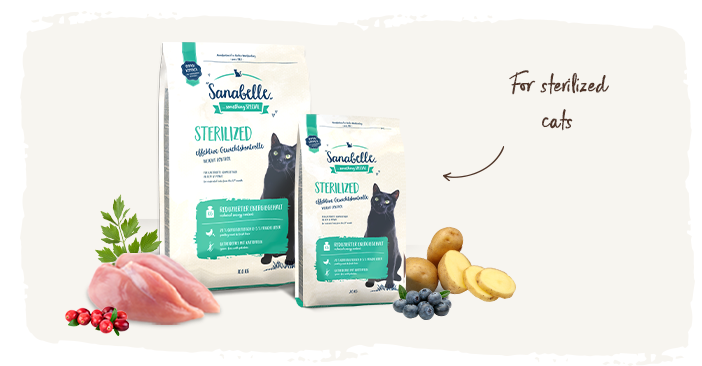

Sanabelle Sterilized is therefore comparable to Sanabelle Light in terms of energy content. Since obesity can also lead to secondary diseases such as diabetes or joint diseases, it is important for neutered cats to follow the feeding recommendations exactly. The higher crude fibre content of Sanabelle Sterilized contributes to significantly better satiety (comparable to dietary fibre in humans).
As many neutered cats have a rather sensitive gastrointestinal tract, Sanabelle Sterilized is a grain-free recipe. Potato is used as a carbohydrate source to cover the cat's energy requirements. Potato is not only gluten-free, but also has a very good protein quality and is very easy to digest. This makes a recipe with potato as a carbohydrate source very suitable for cats with sensitive stomachs or a grain intolerance.
Neutered cats are generally less active than their non-neutered counterparts, which means they often drink less and therefore produce less urine. To prevent urinary tract diseases, it is therefore particularly important to ensure a balanced supply of minerals in their diet, as excess minerals have to be excreted via the urinary tract and can promote the formation of urinary gravel or urinary stones if their water intake is too low. Although cats should be provided with all the essential minerals they need, it is important to ensure that their food contains the right amount of minerals to avoid an oversupply. With Sanabelle Sterilized, special attention has therefore been paid to ensuring that the mineral content of the food is adapted to the cat's needs.
How do I switch my cat to Sterilized food as gently as possible?
You should not change your cat's food suddenly after neutering. Instead, the change should be made gradually over a few days. For healthy and uncomplicated cats, three to four days is sufficient. For cats that are more sensitive or suffer from health problems, the change should be extended to seven to eight days so that the cat's metabolism can slowly get used to the new food.
Do you have further questions about feeding your sterilized paw?
Feel free to contact our nutrition experts. They will be happy to help you by e-mail and by telephone via our free hotline.
Phone: +49 (0) 800 333 8 222 (free of charge)
E-Mail: expertenteam@bosch-tiernahrung.de
Monday - Thursday: 7.30 - 12 o'clock & 13 - 16 o'clock
Friday: 7.30 - 12 o'clock & 13 - 15 o'clock


